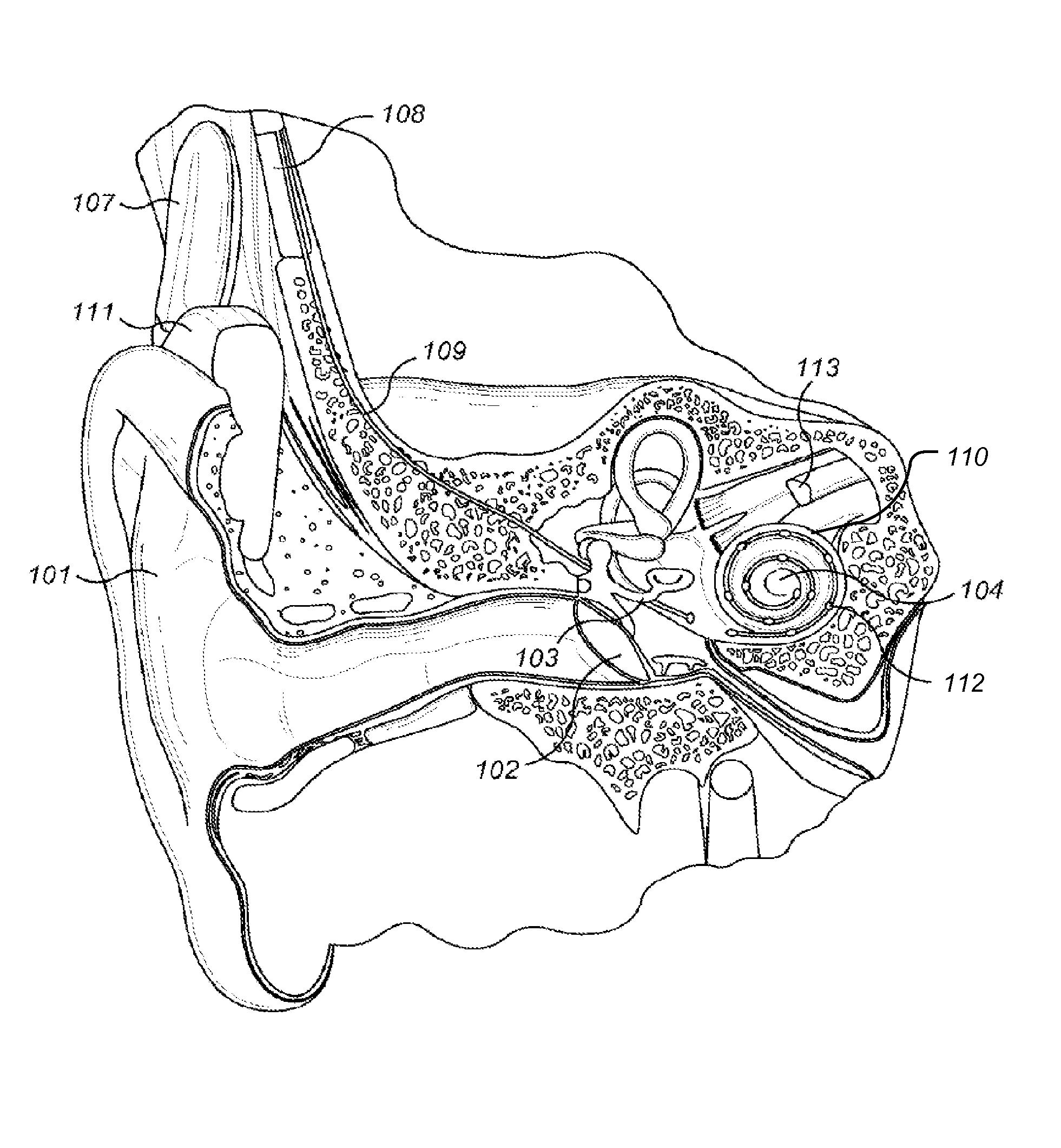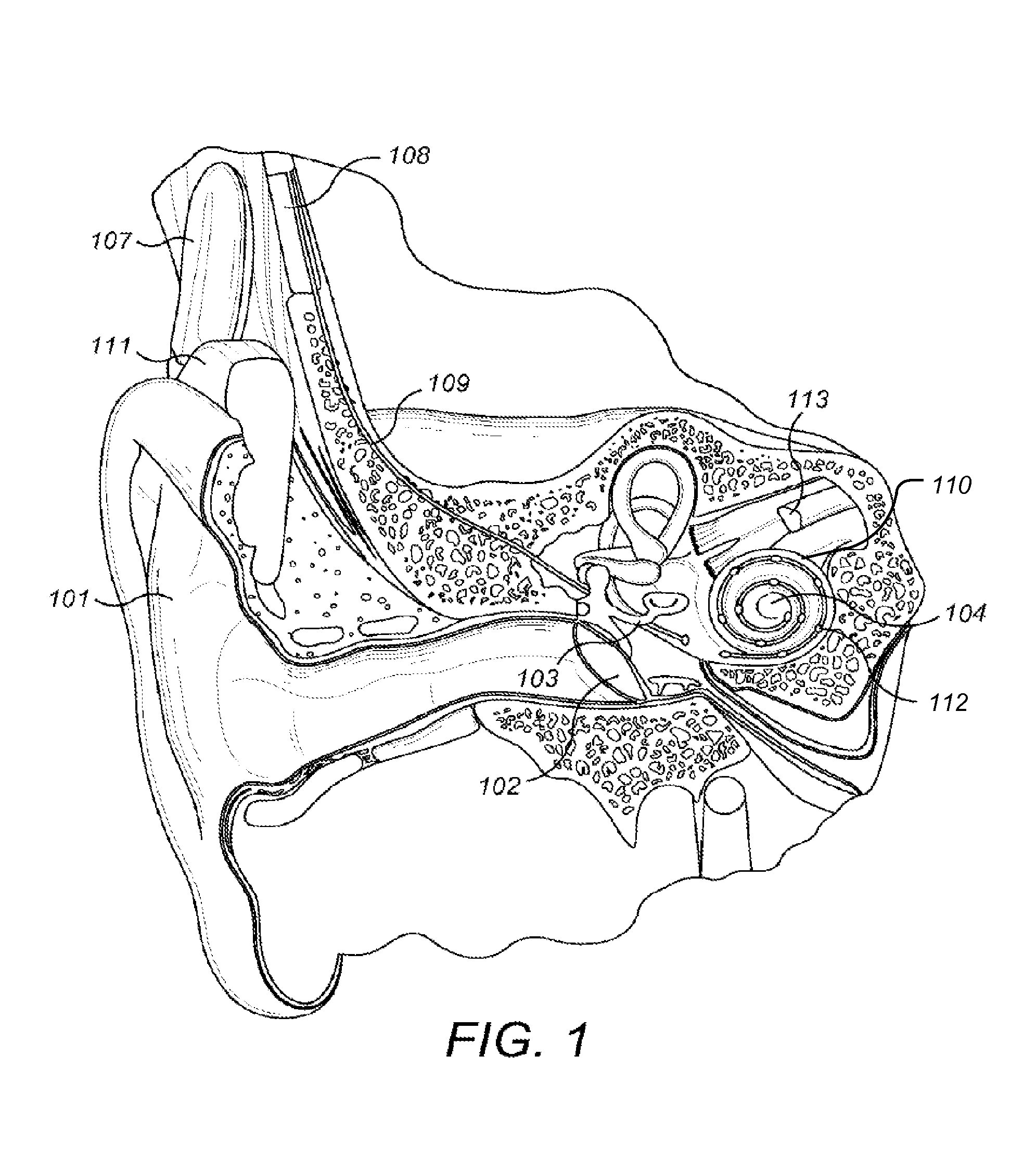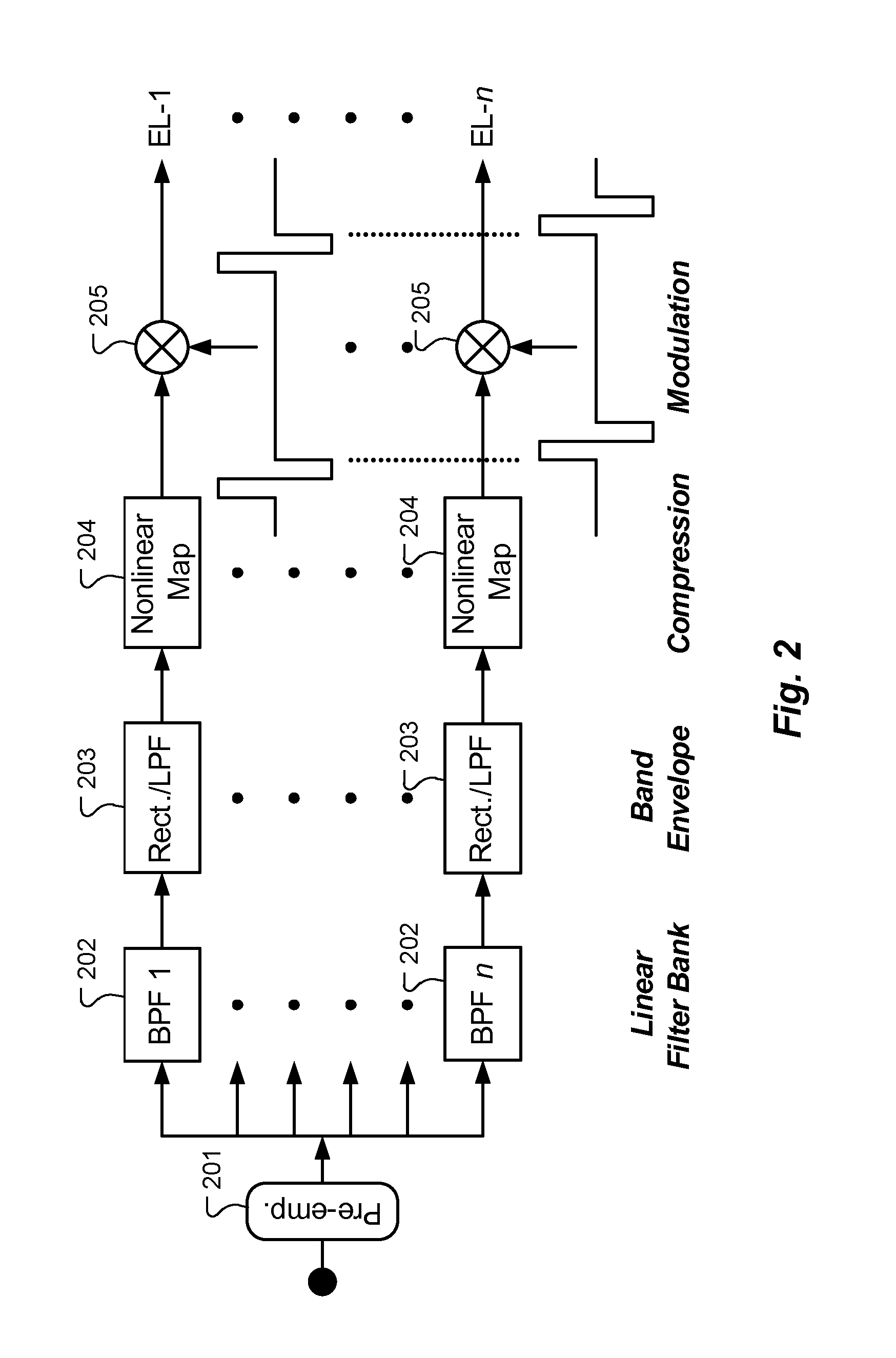Using Alternative Stimulus Waveforms To Improve Pitch Percepts Elicited With Cochlear Implant Systems
- Summary
- Abstract
- Description
- Claims
- Application Information
AI Technical Summary
Benefits of technology
Problems solved by technology
Method used
Image
Examples
Embodiment Construction
[0016]Electrical stimulation at apical locations in the ST can elicit pitch percepts that are not discriminable from one another or that are not ordered from high to low with progressively more apical locations. Such confusions and reversals in pitch can occur at other locations, i.e., basal or middle locations, but the confusions and reversals are far more frequent at the apical locations. A lack of discrimination for all pairings of electrodes, or a reversal or reversals in pitch, may degrade hearing abilities—such as speech or music perception—with CI systems.
[0017]The predominance of confusions and reversals for the apical locations in the ST is thought to arise from the anatomy of the cochlea. In particular, the SGCs follow the course of cochlear spiral (and the course of the ST) up to about the second turn of the cochlea but then end in a terminal bulb at that level. Peripheral processes projecting from the SCGs within the terminal bulb innervate the sensory structures in the ...
PUM
 Login to View More
Login to View More Abstract
Description
Claims
Application Information
 Login to View More
Login to View More - R&D
- Intellectual Property
- Life Sciences
- Materials
- Tech Scout
- Unparalleled Data Quality
- Higher Quality Content
- 60% Fewer Hallucinations
Browse by: Latest US Patents, China's latest patents, Technical Efficacy Thesaurus, Application Domain, Technology Topic, Popular Technical Reports.
© 2025 PatSnap. All rights reserved.Legal|Privacy policy|Modern Slavery Act Transparency Statement|Sitemap|About US| Contact US: help@patsnap.com



